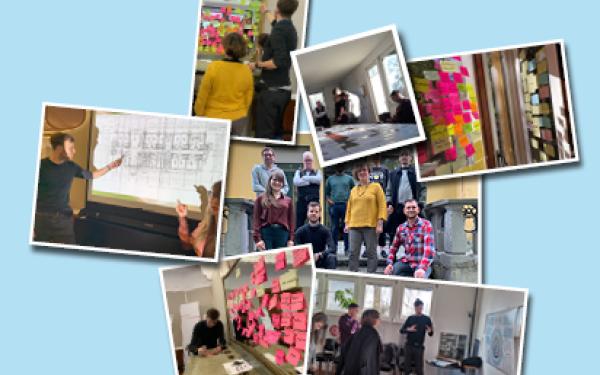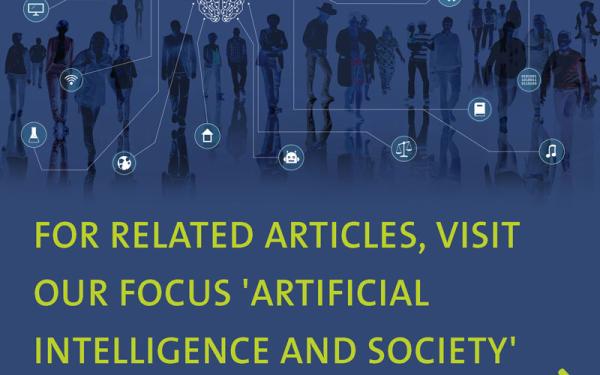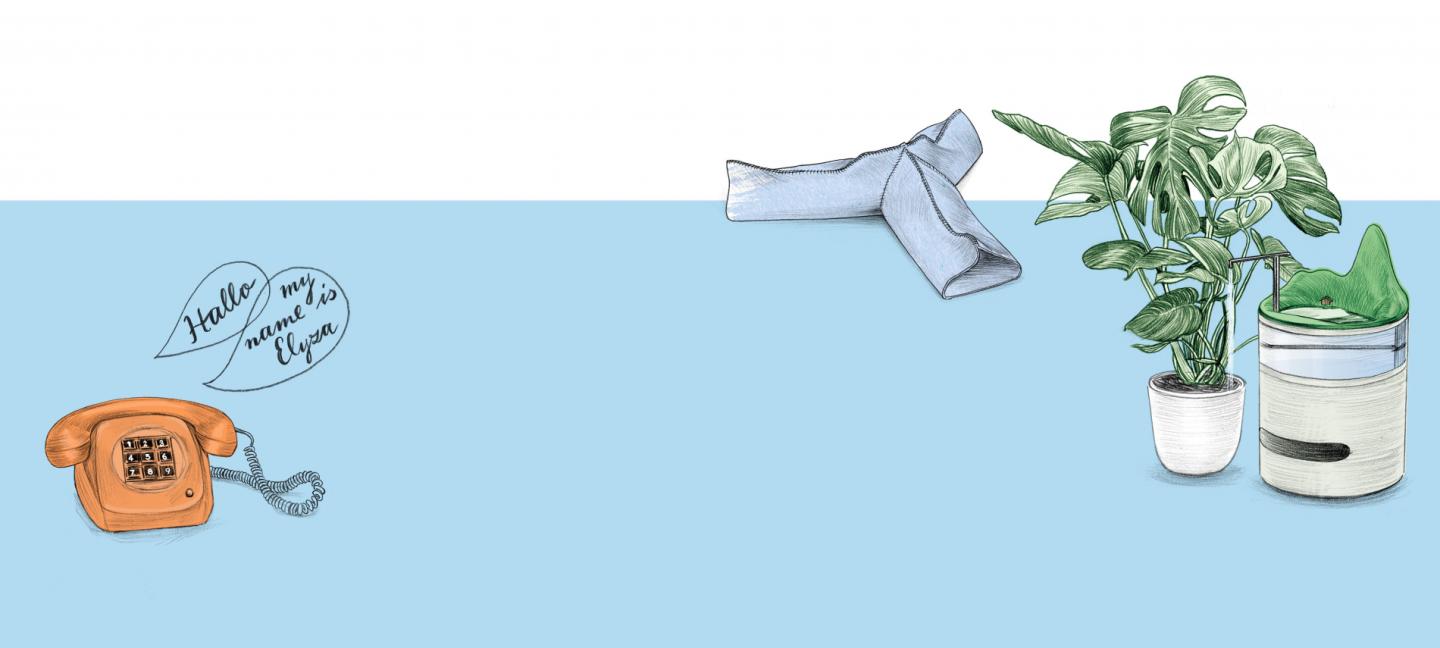
Anja Stiehler
Robotics and elderly care: Machines that help in a humane way
What are the consequences of automation of care for the quality of life and dignity of the elderly? An interdisciplinary research group is working on concepts that are better geared to the needs of elderly people and caregivers alike. The results are innovative ideas in caring for the elderly – that sometimes challenge taboos.
It is a horror vision: A robot lifting nursing-home residents out of bed and feeding them. The elderly people may be wearing clean underwear and are no longer hungry – but there is a complete absence of emotional warmth. The only "person" to interact with is a machine programmed to feign compassion in a metallic-sounding voice issuing every now and then from its loudspeaker.
This is the sort of picture that comes to mind when people think of how robotics can play a role in caring for the elderly. And they are not so far off: "Many of the visions of care robots replacing human care currently being pursued in research tend to neglect human needs. Most scientists in the fields of ethics and nursing science agree on this," says Eva Hornecker, Professor of Human Computer Interaction at the Bauhaus University Weimar. As a member of the interdisciplinary research project "ReThiCare – Rethinking Care Robots", she wants to develop concepts for robotic assistance systems that are as humane as they are useful and practical. The research group therefore asks: When are which technologies really suitable for use in the care of elderly people? And how can they be designed in a way that both respects people's needs and preserves their dignity? The Volkswagen Foundation is supporting the project as part of its funding initiative "Artificial Intelligence and the Society of the Future".
Social robots are only able to simulate communication
In fact, research has so far mainly focused on two types of care robotics. The first category comprises humanoid, i.e. human-looking robots, which are designed to simulate social interaction and replace human contact. "The second category consists of service robots that perform straightforward routine nursing tasks, such as lifting people out of bed," explains Eva Hornecker. The problem is that neither approach is likely to be ready for use in the medium term because "it is ethically inacceptable to confront elderly people with a machine that is only capable of feigning social and, above all, emotional interaction," Hornecker emphasizes. This would raise expectations of a reciprocal relationship, which would inevitably be disappointed. Although films and media convey a different picture, artificial intelligence is very far from being able to develop consciousness and feel emotions. Even if a humanoid robot pretends to be interested and sympathetic to elderly people as a social counterpart, this is never anything more than a deception.
The second category does not meet people's needs and practical requirements either. "It requires great sensitivity and complex motor skills to lift and move old and frail people. The technology is not yet ready to build such sensitive machines," says the computer scientist and engineer. The result is not surprising: despite the high research expenditures – and a lot of media attention – robots are still few and far between in care homes or similar institutions.
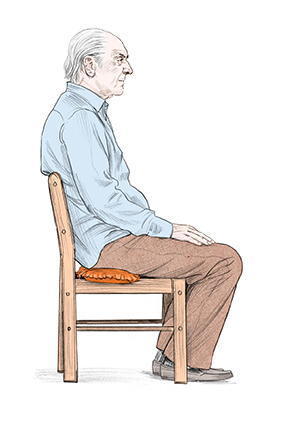
"Reakt" is a platform for the control of interactive pneumatic cushions, which can be used as sensor-based input devices for interacting with media content, games and for dynamic support in rehabilitation and care work.
New approaches are needed
"To rethink the development process of intelligent technologies, science urgently needs to switch to new approaches and methods," says Hornecker. This is why the research project brings together experts from several different fields such as sociology, human-computer interaction, design, robotics and AI, who bring a wide range of perspectives to the table. Their vision: Instead of humanoid "human replacement" robots, the scientists want to focus on intelligent robotic assistance systems. The aim of the project is to develop various ideas and practical concepts that support the work of caregivers as well as the emotional and physical well-being of the residents. Initially, the aim is not necessarily to develop functional prototypes. Rather, among other things, the scientists want to draw attention to new possibilities and methods as to how a needs-oriented and a more human attitude can be incorporated into research.
"To achieve this goal, we have to move away from the classic Silicon Valley method, whereby you have a new, innovative technical solution – and then you look for the problem to fit," says Andreas Bischof, a technology sociologist at Chemnitz University of Technology and one of the project initiators. "It makes sense to look at the problem first, without having the technology foremost in mind."
Diagnosis: Boredom and dying house plants
And so the researchers ventured an unusual step into the real world: They spent time in a nursing home. Four of the project members took part in the everyday life of the Sophienhaus der Diakonie – a care facility for the elderly in Weimar. One of the researchers even worked there for nine weeks as an intern, in order to gain a comprehensive insight into everyday life and to better understand the challenges of everyday nursing care. All four kept detailed diaries and noted down their observations and impressions. Through systematic analysis of their experiences, they were able to work out a range of topics.
One of these is both commonplace and understandable: Boredom. "There is a lack of variety in the lives of the elderly – nothing happens worth talking about," says Andreas Bischof. The term "reciprocity" comes from sociology – Bischof's area of expertise. It is well known that for successful social interaction, there must be reciprocity, i.e. a sharing or mutuality. This is no different in the case of human-machine interaction.
A robot that does not stand alone
This resulted in a new thought experiment: "Why can't robotic assistance be based on humans aiding the robots – and not the other way round?" asks Bischof. This way of thinking, for example, resulted in the creation of Sanne. Sanne resembles a cat, which motivates the residents to pet it – and to disinfect their hands in the process. However, Sanne also needs help because it sometimes gets stuck under the table, for instance. And so a situation is created that requires action from the person present and brings in a topic that most people like talking about: Things that do not function reliably.
Another idea is the PWR - a plant watering robot, whose development is supervised by the technology sociologist Philipp Graf. It steers through the rooms independently and has an important task: Watering the plants. However, this robot is occasionally dependent on the help of others too; for example, when it comes to opening doors or clearing obstacles out of the way. "The inspiration for the PWR came from observing how much a caregiver’s dog brought variety into the everyday life of the home residents," Hornecker reports. The idea behind the PWR is not so much to be useful than to create variety: It is fascinating to watch it moving around to water the plants – and it interrupts the dull routine in the nursing home.
"And more often than not, homes for the elderly are not quite like home. There are no indoor plants, for example, because they often die from neglect. The already overburdened nursing staff has no time to take care of plants as well," Bischof adds. The PWR helps to solve this problem – not an independent stand-alone solution, but entertaining.
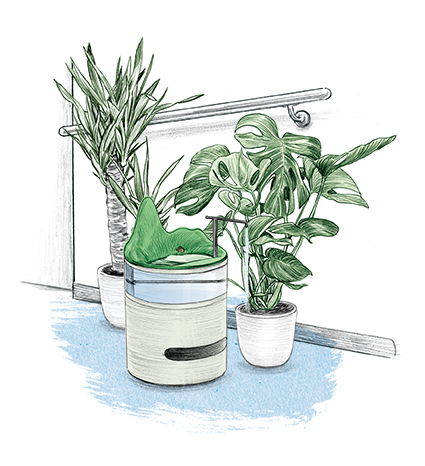
Der "PWR 3000" soll zur Kommunikation anregen. Als bewegliche Roboterplattform fährt er durch das Pflegeheim und bewässert Pflanzen.
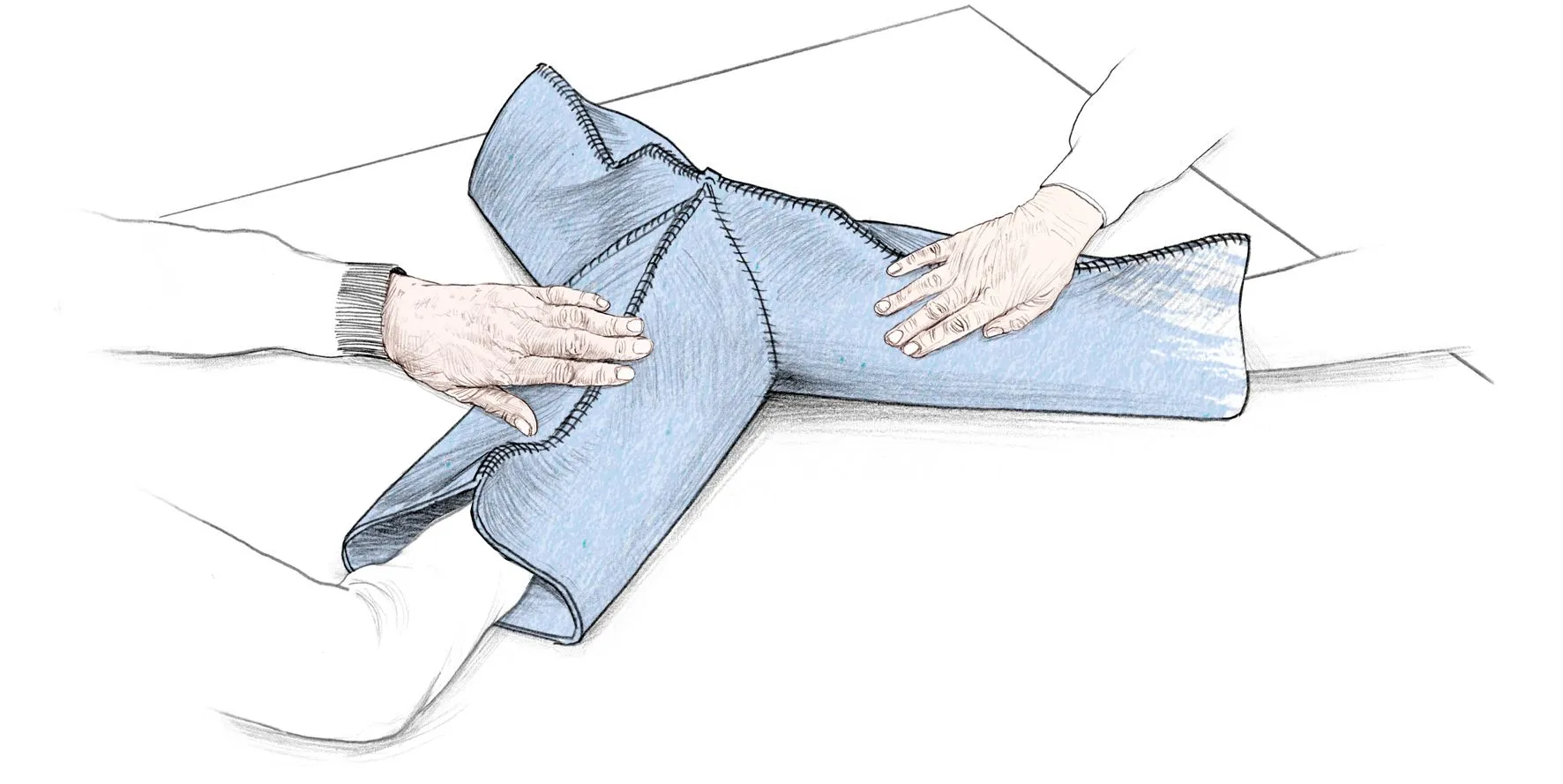
The glove-like "intimus" helps the research group to determine how intimacy is experienced and lived in retirement homes and if technologies can play a supporting role in this. The prototype invites you to touch it, creates opportunities for mutual playful contact and can react with sound.
"Without help from other disciplines, a robotics engineer alone would never come up with such an idea," says Norbert Krüger with a smile. He is a mathematician and professor of robotics at the Institute of Engineering Sciences at the University of Southern Denmark in Odense. But of course the roboticist also makes an essential contribution. He develops the robotics technology to realize the ideas that the interdisciplinary team comes up with. And his project colleagues, in turn, remarkably often use a term that Krüger has contributed from his area of expertise: The Technology Readiness Level (TRL).
Without help from other disciplines, a robotics engineer alone would never come up with such an idea
This is a scale from 1 to 9 that measures the level of development reached by an individual technology. "If the point of departure is not the technology, but rather a concept for fulfilling a need or for a solution to a problem, then you must have a measure of how far a fitting technology has already been implemented into a product – and how quickly it can therefore be used."
For example: The concepts for IntiMe and IntimUS developed by the research group can already be practically implemented today: IntiMe is a blanket with electrical functions that can be spread over the body. Where people touch the blanket, it responds with vibrations. IntimUs acts like a kind of oversized hand muff with several openings for hands. It can lie on a table, for example, and reacts with vibrations and sounds when at least two pairs of hands are in it. "Most people like closeness and long for physical contact and sexuality. That doesn't stop with age either," explains Eva Hornecker. And so Britta Schulte, the researcher in charge of the project, together with her colleagues thought about whether there could be small technical solutions for this – without having to create a human-like but fake projection figure first. "Sexuality and masturbation in old age is a very sensitive topic. But from our observations in the homes we have concluded that it deserves attention".
Objects that touch humans
Developing technical equipment for such sensitive applications places enormous demands on the design. "With the use of robotics in care, a new form of social interaction has entered our lives," explains Wolfgang Sattler, Professor of Product Design at the Bauhaus University Weimar and also one of the project leaders. "And we must not forget that not only do we humans touch objects – they touch us too. Operating has replaced conceptualizing." For Sattler, the so-called universal design is an important goal: "Design and a robot’s visual appearance can stigmatize. But it can also have exactly the opposite effect, i.e. make it possible for everyone to use something without feeling excluded".
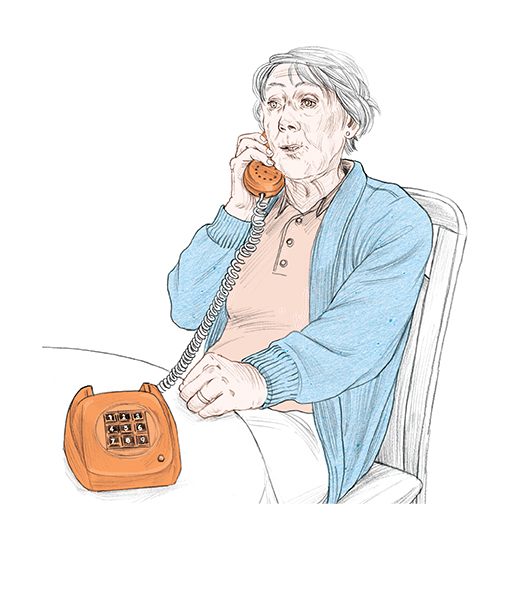
How can personal language assistants increase social and digital participation for senior citizens and support the care processes or even contribute to emergency detection? The prototype "Elyza" is a voice assistant disguised as a landline phone.
Sattler offers the smart spoon from Liftware as a good example. People suffering from Parkinson's disease often tremble uncontrollably. For them, eating a bowl of soup becomes almost impossible. "The Liftware spoon looks quite ordinary, but it incorporates motion sensors to compensate for the patient’s shaky hand in such a way that they can eat a meal alone," explains Sattler. "That would be one of my goals for the robotic helpers: Allowing people to use such objects in public without feeling embarrassed." These are all quite small steps. "There is no such thing as a one-size-fits-all robotic solution to the problems encountered in care institutions. But maybe thousands of small steps will eventually change the way robotics research can support elderly people and caregivers," says the designer.
And this does not call for opulence in design. Sattler focuses on simplicity, practicality and reduction. The development of robotic assistance systems should not be optically oriented towards human or animal models, but should be restrained and functional. "The thing should not push itself into the foreground. It should simply be a help."
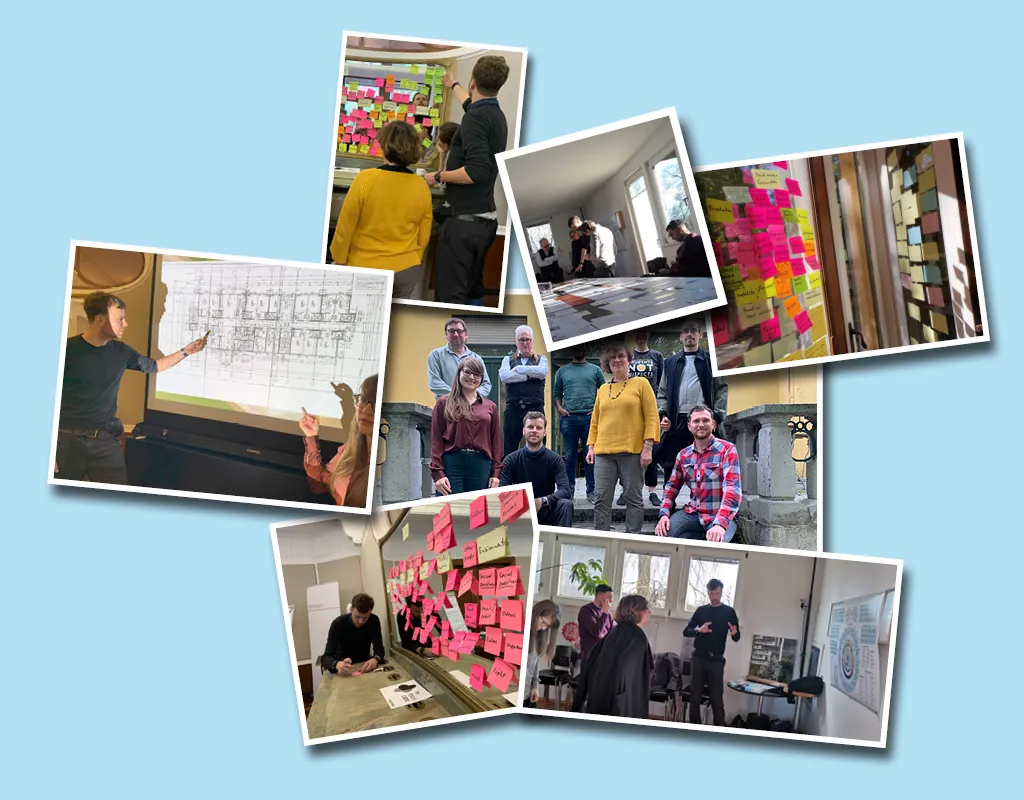
The ReThiCare project is not only implemented across disciplines by researchers in the fields of sociology, human-computer interaction, design, as well as robotics and artificial intelligence, but also crosses national borders between Germany and Denmark.

